Nissan Leaf VS Suzuki Ignis – Specs, Efficiency & Price Comparison
Which model is the better choice – the Nissan Leaf or the Suzuki Ignis? We compare performance (217 HP vs 83 HP), boot capacity (394 L vs 267 L), efficiency (16.70 kWh vs 4.90 L), and of course, the price (30800 £ vs 15600 £).
Find out now which car fits your needs better!
The Nissan Leaf (Hatchback) is powered by a Electric engine and comes with a Automatic transmission. In comparison, the Suzuki Ignis (SUV) features a Petrol MHEV engine and a Manuel or Automatic gearbox.
When it comes to boot capacity, the Nissan Leaf offers 394 L, while the Suzuki Ignis provides 267 L – depending on what matters most to you. If you’re looking for more power, you’ll need to decide whether the 217 HP of the Nissan Leaf or the 83 HP of the Suzuki Ignis suits your needs better.
There are also differences in efficiency: 16.70 kWh vs 4.90 L. In terms of price, the Nissan Leaf starts at 30800 £, while the Suzuki Ignis is available from 15600 £.
Compare all the key specs now and find out which model fits your lifestyle best!
Nissan Leaf
The Nissan Leaf stands out as a pioneering model in the realm of electric vehicles, known for its impressive blend of practicality and eco-friendliness. It offers a smooth and quiet driving experience, making it an ideal choice for city commuting and longer journeys alike. The interior design is both comfortable and intuitive, providing drivers with a sense of modernity and ease of use.
details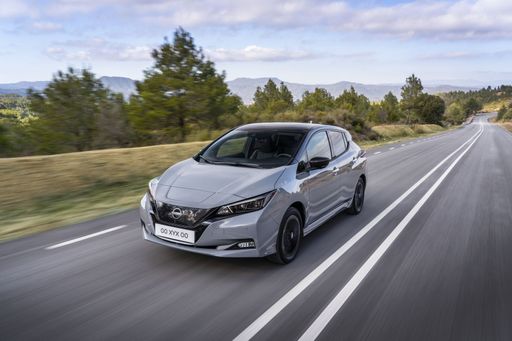 @ germany.nissannews.com
@ germany.nissannews.com
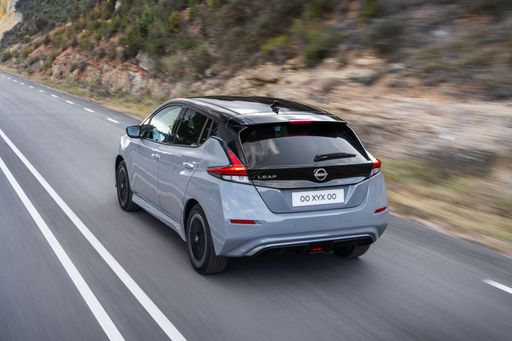 @ germany.nissannews.com
@ germany.nissannews.com
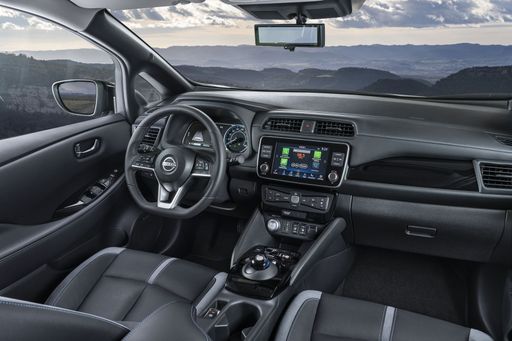 @ germany.nissannews.com
@ germany.nissannews.com
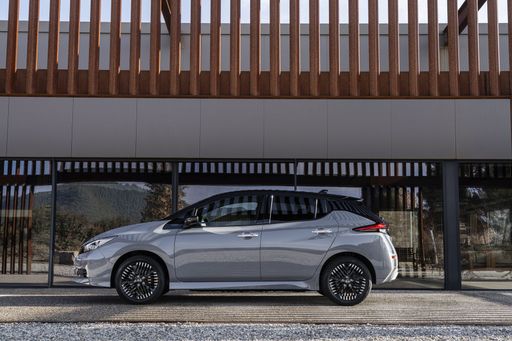 @ germany.nissannews.com
@ germany.nissannews.com
Suzuki Ignis
The Suzuki Ignis is a compact car that stands out with its unique blend of small SUV aesthetics and city-friendly dimensions. Its playful and distinctive design, combined with a practical and elevated driving position, makes it an appealing choice for urban dwellers seeking versatility without compromising on style. Inside, the Ignis offers a surprisingly spacious cabin with innovative storage solutions, making it ideal for those who need a functional yet characterful vehicle.
details @ Suzuki
@ Suzuki
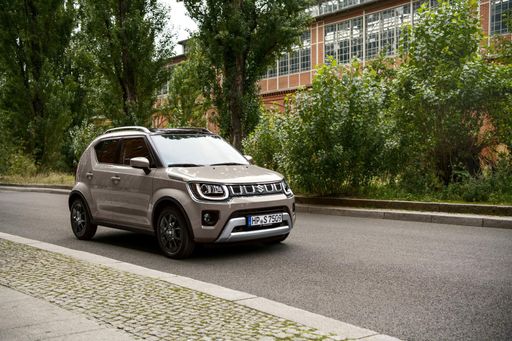 @ Suzuki
@ Suzuki
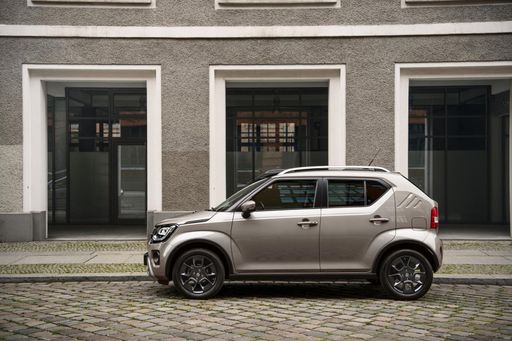 @ Suzuki
@ Suzuki
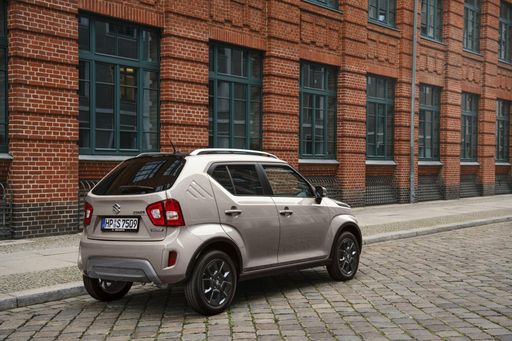 @ Suzuki
@ Suzuki
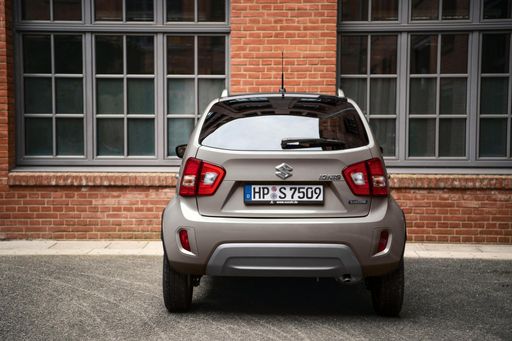 @ Suzuki
@ Suzuki

|

|
|
|
|
Costs and Consumption |
|
|---|---|
|
Price
30800 - 37200 £
|
Price
15600 - 19500 £
|
|
Consumption L/100km
-
|
Consumption L/100km
4.9 - 5.4 L
|
|
Consumption kWh/100km
16.7 - 17.8 kWh
|
Consumption kWh/100km
-
|
|
Electric Range
270 - 385 km
|
Electric Range
-
|
|
Battery Capacity
39 - 59 kWh
|
Battery Capacity
-
|
|
co2
0 g/km
|
co2
110 - 122 g/km
|
|
Fuel tank capacity
-
|
Fuel tank capacity
30 - 32 L
|
Dimensions and Body |
|
|---|---|
|
Body Type
Hatchback
|
Body Type
SUV
|
|
Seats
5
|
Seats
4 - 5
|
|
Doors
5
|
Doors
5
|
|
Curb weight
1580 - 1756 kg
|
Curb weight
935 - 995 kg
|
|
Trunk capacity
385 - 394 L
|
Trunk capacity
204 - 267 L
|
|
Length
4490 mm
|
Length
3700 mm
|
|
Width
1788 mm
|
Width
1690 mm
|
|
Height
1540 - 1545 mm
|
Height
1605 mm
|
|
Payload
384 - 415 kg
|
Payload
335 - 395 kg
|
Engine and Performance |
|
|---|---|
|
Engine Type
Electric
|
Engine Type
Petrol MHEV
|
|
Transmission
Automatic
|
Transmission
Manuel, Automatic
|
|
Transmission Detail
Reduction Gearbox
|
Transmission Detail
Manual Gearbox, CVT
|
|
Drive Type
Front-Wheel Drive
|
Drive Type
Front-Wheel Drive, All-Wheel Drive
|
|
Power HP
150 - 217 HP
|
Power HP
83 HP
|
|
Acceleration 0-100km/h
6.9 - 7.9 s
|
Acceleration 0-100km/h
12.7 - 12.8 s
|
|
Max Speed
144 - 157 km/h
|
Max Speed
155 - 165 km/h
|
|
Torque
320 - 340 Nm
|
Torque
107 Nm
|
|
Number of Cylinders
-
|
Number of Cylinders
4
|
|
Power kW
110 - 160 kW
|
Power kW
61 kW
|
|
Engine capacity
-
|
Engine capacity
1197 cm3
|
General |
|
|---|---|
|
Model Year
2019
|
Model Year
2020
|
|
CO2 Efficiency Class
A
|
CO2 Efficiency Class
C, D
|
|
Brand
Nissan
|
Brand
Suzuki
|
Nissan Leaf
Introduction to the Nissan Leaf: A Pioneer in Electric Mobility
The Nissan Leaf has established itself as a trailblazer in the realm of electric vehicles (EVs) since its launch. As we delve into its present-day iterations, the Leaf continues to soar in popularity due to remarkable advancements in technology and sustainability. Let's explore what makes the Nissan Leaf a standout in today's automotive market.
Power and Performance: Under the Hood of the Nissan Leaf
The Nissan Leaf boasts a power output ranging from 150 to 217 PS, depending on the battery option chosen. The vehicle's electric motor, a product of cutting-edge engineering, offers instant torque ranging from 320 to 340 Nm, resulting in impressive acceleration capabilities. The 0 to 100 km/h dash is achieved in as little as 6.9 seconds, showcasing its prowess in electric performance.
Battery Technology: Efficient Energy Management
When discussing the Nissan Leaf, battery technology is at the forefront. The available battery capacities range from 39 to 59 kWh, supporting an electric range between 270 to 385 km. This flexibility allows drivers to choose a model that best fits their driving habits, providing peace of mind for longer journeys without frequent recharging.
Sustainability: The Environmental Edge
One of the primary attractions of the Nissan Leaf is its commitment to sustainability. As an all-electric vehicle, it produces zero CO2 emissions, placing it in the top tier of the CO2-efficiency class with an 'A' rating. This clean energy approach contributes significantly to reducing environmental impact and supports Nissan's drive towards a greener future.
Design and Comfort: Aesthetic Appeal and Practicality
The Nissan Leaf is not just about efficiency; it's also designed for comfort and utility. With its sleek hatchback body and dimensions of 4490 mm in length, 1788 mm in width, and a height of up to 1545 mm, it offers ample interior space. The boot capacity ranges from 385 to 394 litres, providing sufficient storage for everyday needs. The model accommodates five passengers comfortably, ensuring a pleasant ride for everyone.
Innovations and Safety: Advanced Features for Peace of Mind
Nissan equips the Leaf with an array of intelligent features that enhance safety and convenience. The available equipment lines, including N-CONNECTA, Tekna, e+ N-CONNECTA, and e+ Tekna, offer varying levels of technology integration. ProPILOT Assist, e-Pedal, and a comprehensive suite of driver-assistance technology are just a few examples that highlight Nissan's commitment to innovation in the EV market.
Conclusion: The Nissan Leaf Continues to Lead
With prices ranging from €35,900 to €43,400, the Nissan Leaf remains an attractive choice for those looking to embrace electric mobility. It perfectly balances performance, design, and sustainability, making it a compelling choice in the competitive EV landscape. The Nissan Leaf not only represents the future of driving but also reinforces why it continues to be a leader in the electric vehicle community.
Suzuki Ignis
Introducing the Suzuki Ignis: A Compact SUV Marvel
The Suzuki Ignis, with its distinctive compact SUV design, seamlessly combines style, practicality, and a hint of adventure. This versatile vehicle is the epitome of efficient urban motoring, boasting impressive attributes while maintaining a pocket-friendly appeal. Let's delve into what makes the Ignis a remarkable choice for urban drivers and adventure enthusiasts alike.
Innovative Mild-Hybrid Technology
At the heart of the Suzuki Ignis is its innovative Mild-Hybrid technology, which pairs a 1.2-litre Dualjet petrol engine with an integrated electric motor. This combination promotes a seamless driving experience with reduced emissions and better fuel efficiency. The engine delivers a respectable 83 PS (61 kW), with a smooth power output that's perfect for navigating busy city streets or winding country roads, ensuring you get the best of both worlds in performance and eco-friendliness.
Versatile Drivetrain Options
Drivers can choose between manual and automatic transmission options to suit their driving preferences. For those seeking added stability and control, the Ignis also offers an ALLGRIP all-wheel-drive system that promises enhanced traction under challenging conditions. Whether you favour a traditional manual gearbox or prefer the ease of an automatic, the Ignis provides flexibility to match your lifestyle.
A Perfect Blend of Performance and Efficiency
With an impressive consumption range of 4.9 to 5.4 L/100km, the Ignis manages to balance performance and efficiency effectively, leading to reduced running costs and a lesser environmental impact. This makes it an ideal companion for both urban and rural commutes, delivering an engaging driving experience with low fuel consumption.
Compact Yet Spacious Design
Despite its compact dimensions (3700 mm in length, 1690 mm in width, and 1605 mm in height), the Suzuki Ignis does not compromise on space. It boasts a practical five-door layout, accommodating up to five passengers comfortably. The boot offers a capacity ranging from 204 to 267 litres, ensuring that you have ample space for luggage or shopping, whether you're heading for a weekend getaway or a day in the city.
Attention to Safety and Comfort
The Suzuki Ignis places a strong emphasis on safety, equipped with several driver assistance features and an efficient braking system, ensuring peace of mind on every journey. Inside, the cabin is designed for comfort, with high-quality materials and user-friendly technology, creating an inviting atmosphere for both driver and passengers.
Economical Ownership
Owning a Suzuki Ignis is not only attractive from a driving perspective but also in terms of running costs. With monthly expense estimates between €673 and €751 and competitive cost per kilometre, the Ignis stands out as a cost-effective option for the budget-conscious driver. It also holds a favourable position in CO2-efficiency classes, further reinforcing its status as an economical choice.
Final Thoughts
The Suzuki Ignis is more than just a car; it's a modern-day companion designed for those who value efficiency, practicality, and style without sacrificing performance. Whether navigating through urban landscapes or tackling country roads, the Ignis offers reliable functionality complemented by advanced features. It is a testament to Suzuki's ongoing innovation and commitment to meeting the demands of today's drivers.
The prices and data displayed are estimates based on German list prices and may vary by country. This information is not legally binding.
